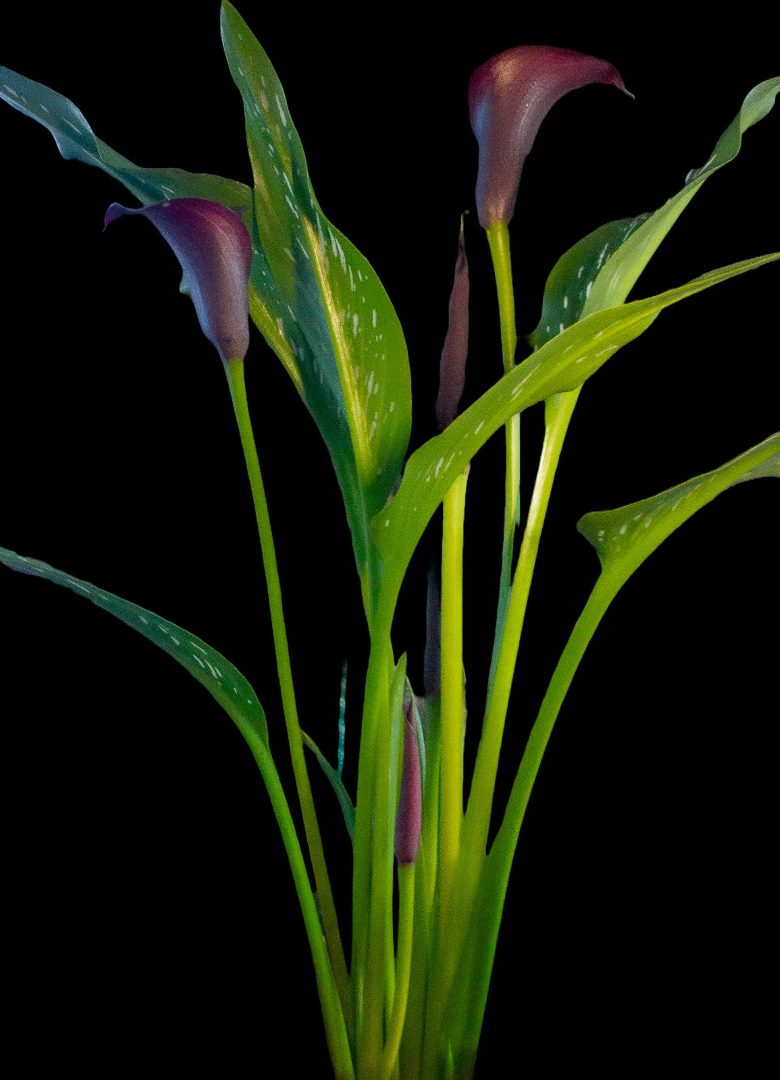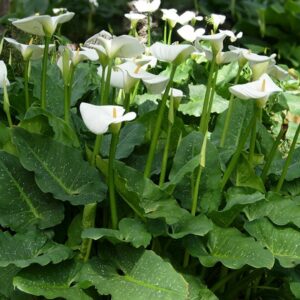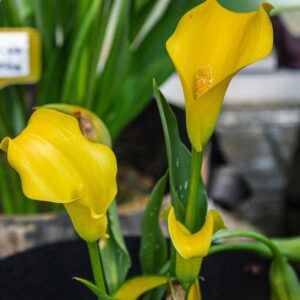Your cart is currently empty!
Paco Calla Lily: A Comprehensive Guide to the Breathtaking Tropical Flower

Introduction
Paco calla lily (Zantedeschia aethiopica ‘Green Goddess’), a captivating member of the Araceae family, stuns with its striking foliage and elegant blooms. Its origins lie in the verdant wetlands of South Africa, where it flourishes in moist, shady environments.
Botanical Characteristics
Foliage
The foliage of the paco calla lily is a sight to behold. Each plant boasts numerous broad, arrow-shaped leaves that emerge in a rich, emerald green hue. The leaves have a distinctive glossy texture and can grow up to 24 inches in length, creating a stunning display.
Flowers
The iconic blooms of the paco calla lily are a testament to its tropical beauty. The flowers consist of a central spadix, surrounded by a spathe, which resembles a trumpet-shaped petal. The spathe emerges in a pristine white color, gradually transitioning to a delicate shade of green as the flower matures. The spadix, adorned with tiny yellow flowers, adds a vibrant touch to the overall display.
Cultivation and Care
Soil and Drainage
Paco calla lilies thrive in well-drained, organic soil. They prefer soil with a neutral to slightly acidic pH range (6.0-6.5). To enhance drainage and aeration, consider incorporating peat moss, perlite, or compost into the soil.
Light Requirements
These plants favor partial shade, as direct sunlight can scorch their delicate foliage. They can tolerate full shade, but their blooming performance may be diminished. Provide ample indirect light to ensure healthy growth and abundant blooms.
Watering
Paco calla lilies prefer consistently moist soil, especially during their growing season. Water deeply and allow the soil to dry slightly between waterings. Overwatering can lead to root rot, while insufficient watering can stunt growth and inhibit flowering.
Fertilization
Fertilize paco calla lilies during their active growing period with a balanced liquid fertilizer. Apply the fertilizer according to the manufacturer’s instructions, taking care not to overfeed, as this can burn the roots.
Uses and Significance
Paco calla lilies add an exotic touch to any garden or landscape. They are popular choices for:
- Garden beds and borders: Their striking foliage and elegant blooms make them excellent focal points in garden beds and borders.
- Ponds and water gardens: Their ability to tolerate moist environments makes them ideal candidates for planting near ponds and water gardens.
- Cut flowers: The long-lasting blooms of paco calla lilies are prized by florists and make stunning additions to bouquets and arrangements.
- Pollinator attraction: The flowers attract pollinators such as bees and butterflies.
Troubleshooting
Common Pests and Diseases
Paco calla lilies are generally resistant to pests and diseases, but they can be susceptible to:
- Aphids: These small, sap-sucking insects can infest the leaves and stems, causing stunted growth and yellowing.
- Spider mites: These tiny, web-spinning mites can cause stippling and yellowing of the leaves.
- Root rot: Overwatering can lead to root rot, causing the plant to wilt and decline.
Tips for Prevention and Control
To prevent and control pests and diseases:
- Maintain proper spacing between plants to promote air circulation and reduce the spread of disease.
- Inspect plants regularly for signs of pests and diseases, and take prompt action to control infestations.
- Avoid overwatering to prevent root rot.
- Use organic pest control methods such as neem oil or insecticidal soap.
Conclusion
Paco calla lily, with its captivating foliage and elegant flowers, is a true horticultural gem. Its adaptability to various garden conditions and its low maintenance requirements make it a popular choice for both experienced and novice gardeners alike. By understanding its botanical characteristics, cultivation requirements, and potential issues, you can successfully cultivate and enjoy the stunning beauty of this tropical wonder.








Leave a Reply